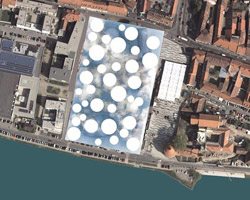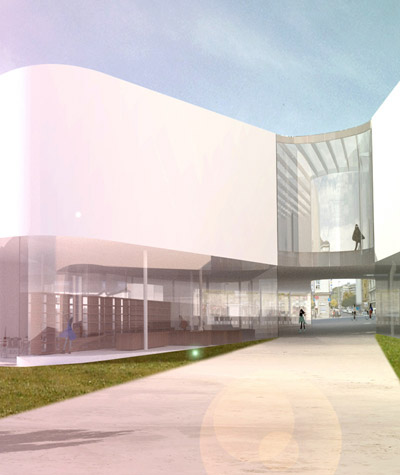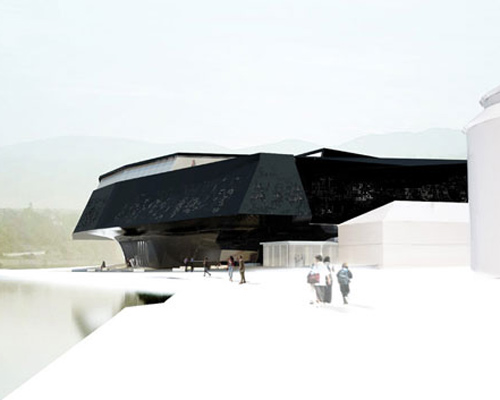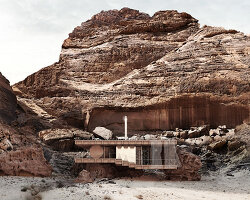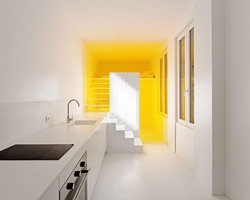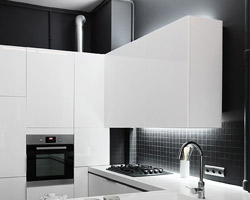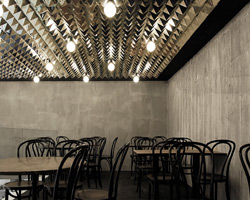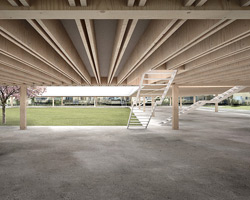KEEP UP WITH OUR DAILY AND WEEKLY NEWSLETTERS
PRODUCT LIBRARY
the minimalist gallery space gently curves at all corners and expands over three floors.
kengo kuma's qatar pavilion draws inspiration from qatari dhow boat construction and japan's heritage of wood joinery.
connections: +730
the home is designed as a single, monolithic volume folded into two halves, its distinct facades framing scenic lake views.
the winning proposal, revitalizing the structure in line with its founding principles, was unveiled during a press conference today, june 20th.
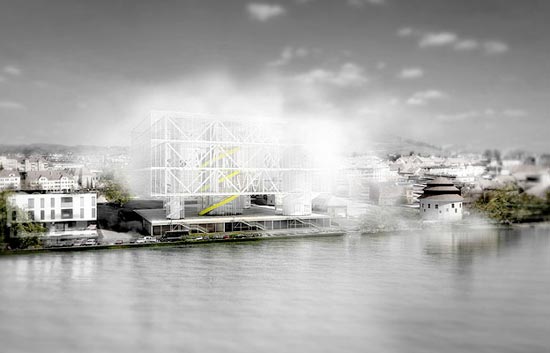
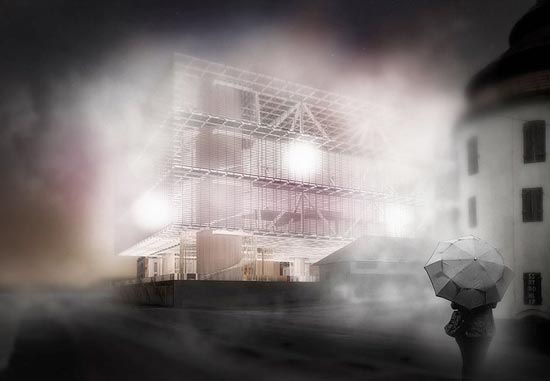
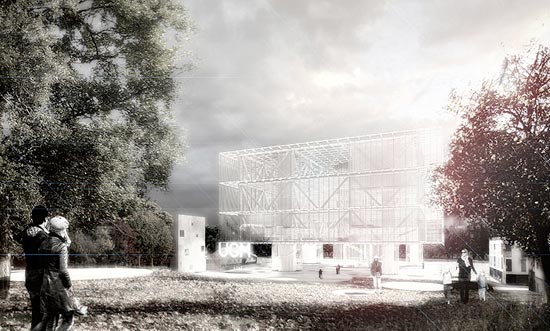 entrance to the site through a park, north side
entrance to the site through a park, north side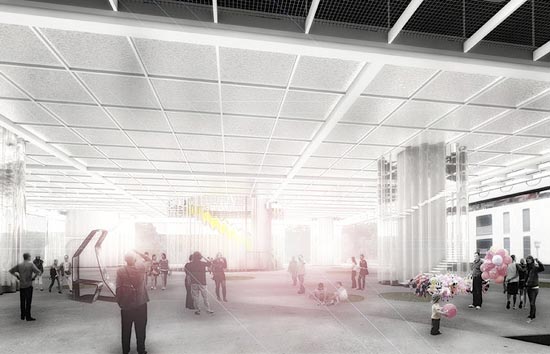
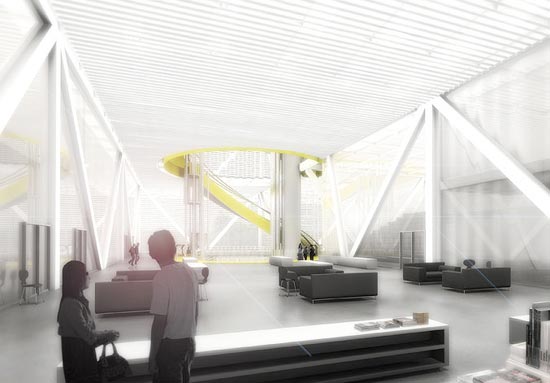 main nave ‘city’s living room’ viewed from the bookstore
main nave ‘city’s living room’ viewed from the bookstore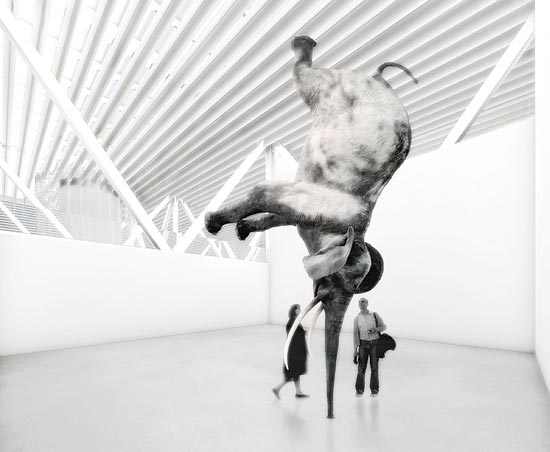 high ceiling periodical exhibition room. work of art : daniel firman ‘würsa (à 18 000 km de la terre)’.
high ceiling periodical exhibition room. work of art : daniel firman ‘würsa (à 18 000 km de la terre)’.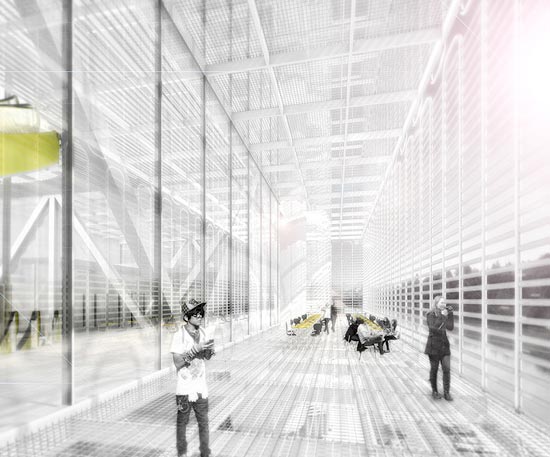 south terrace (catering area), main nave level.
south terrace (catering area), main nave level.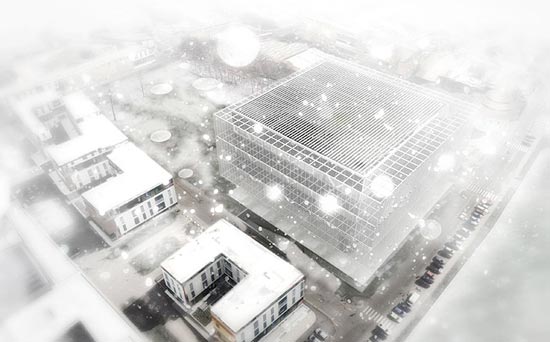 view of the site from above, during winter
view of the site from above, during winter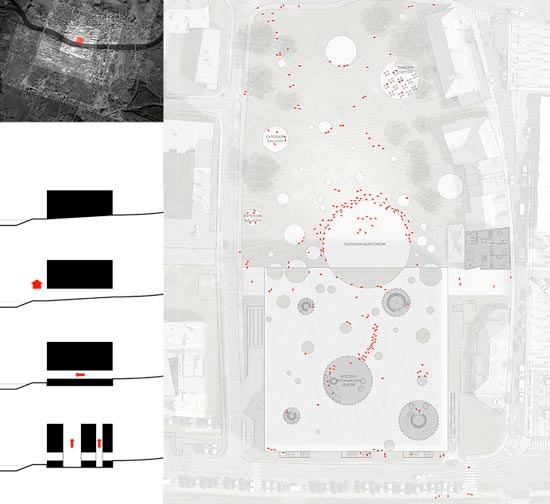 site plan of the project at street level: a large public park connects with the museum plaza. conceptual section diagram: continuity from the street to the river and vertical communications.
site plan of the project at street level: a large public park connects with the museum plaza. conceptual section diagram: continuity from the street to the river and vertical communications.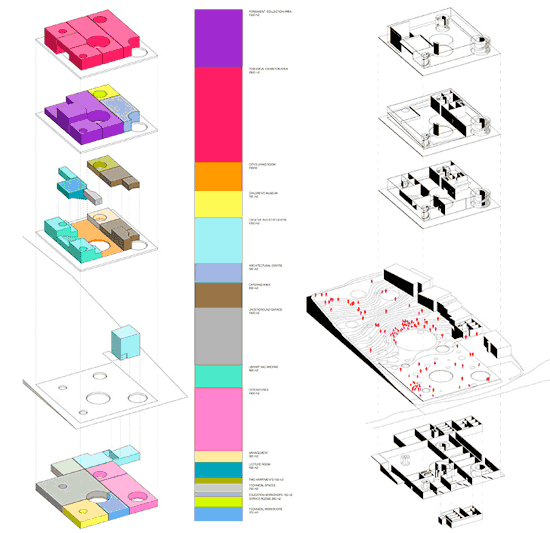 programmatic diagram -1 : storage, parking 0 : public plaza +1 : general public program +2 : permanent exhibition +3 : periodical exhibition
programmatic diagram -1 : storage, parking 0 : public plaza +1 : general public program +2 : permanent exhibition +3 : periodical exhibition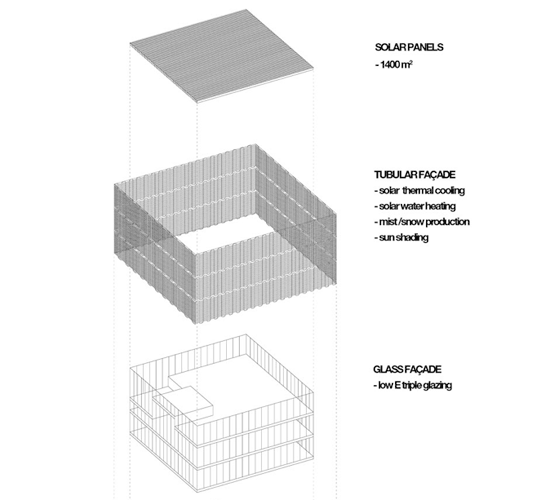
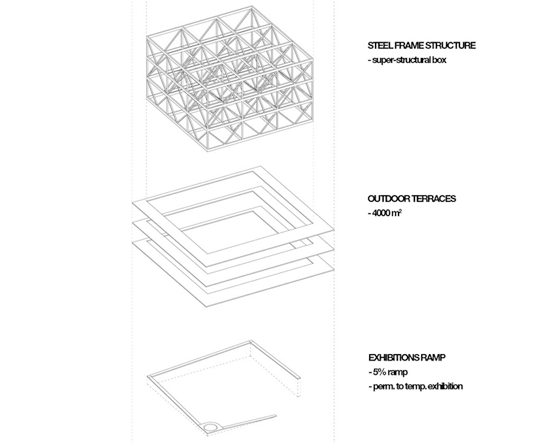
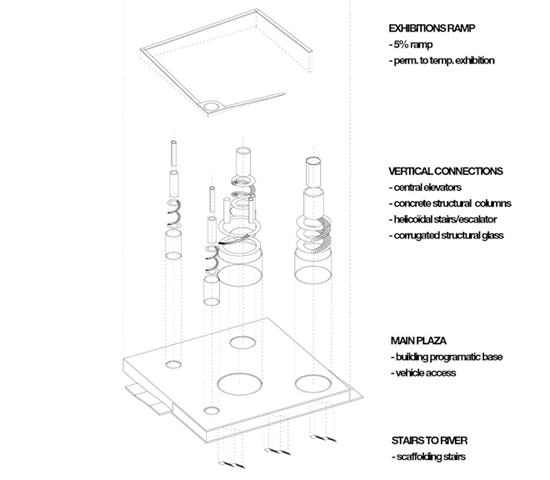
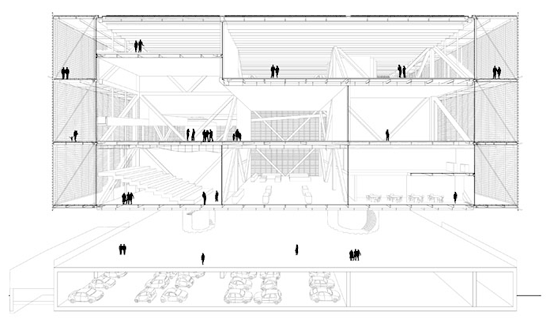 section view
section view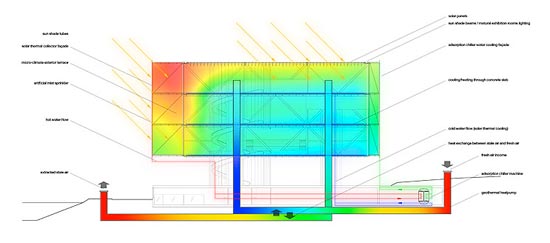 general climatic functionning, mixing air and water temperature conditionning techniques : heat pump + solar thermal cooling/heating
general climatic functionning, mixing air and water temperature conditionning techniques : heat pump + solar thermal cooling/heating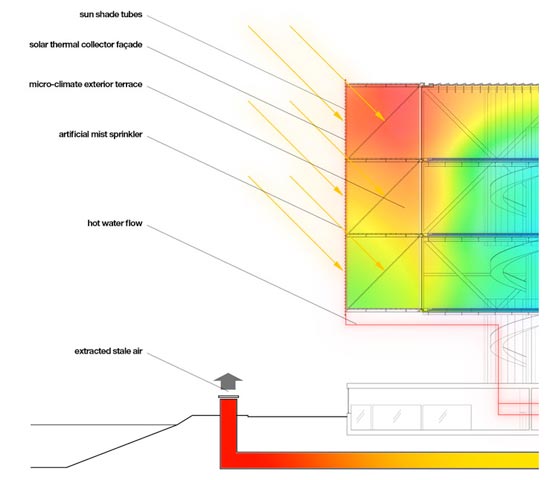 south part, featuring solar thermal collectors, stale air way out…
south part, featuring solar thermal collectors, stale air way out…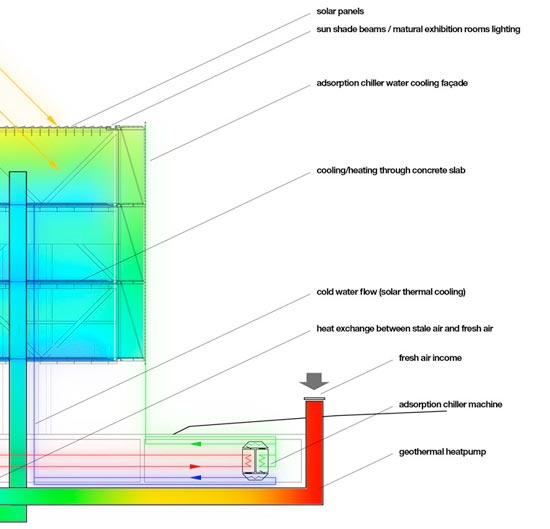 north part, featuring fresh air entrance, solar thermal cooling machine…
north part, featuring fresh air entrance, solar thermal cooling machine…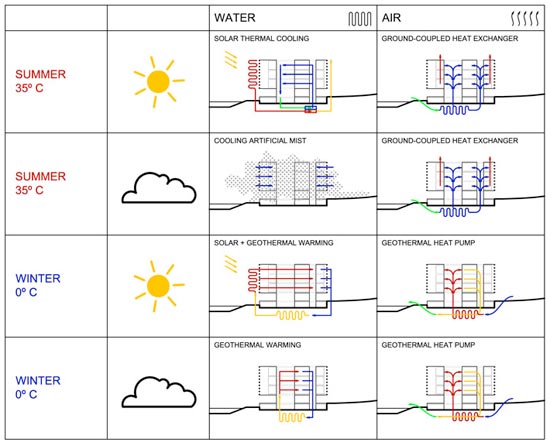 indoor temperature control : air + water flows in various climatic situations
indoor temperature control : air + water flows in various climatic situations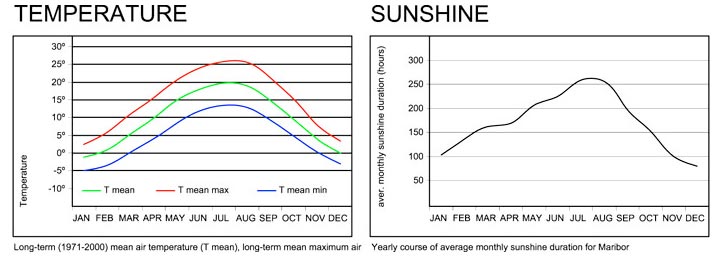 maribor climate: outside temperature increases with sunshine duration, making very efficient use of solar thermal cooling.
maribor climate: outside temperature increases with sunshine duration, making very efficient use of solar thermal cooling. climatic control through 4 elements : – water : heating/cooling through ground and sun energies, refreshing through mist – air : heating/cooling through ground geothermal energy – sun : heating façade, provinding shaded light, providing photovoltaic energy
climatic control through 4 elements : – water : heating/cooling through ground and sun energies, refreshing through mist – air : heating/cooling through ground geothermal energy – sun : heating façade, provinding shaded light, providing photovoltaic energy